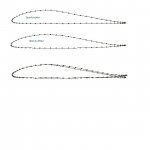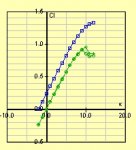rehler
Gold Member
- Joined
- Oct 30, 2003
- Messages
- 750
- Location
- New Braunfels, Texas
- Aircraft
- Custom Gyrocopter
- Total Flight Time
- 700+
Since Norm's conference is not available and my memory is poor, I have to re-ask a question that was well answered before by Chuck Beaty on the old conference:
As I recall the new Sport Rotor blades were found to fly at a different disk tilt than others. I think they flew flatter. This caused the trim spring to need significant readjustment. I think it needed to be loosened. And on some gyros it required the offset distance to be changed. I think it needed to be reduced (from 1" to 5/8" for example).
Am I remembering this correctly?
And what causes the Sport Rotor blades to do this?
The reason I am asking is that I have my rotor head off and will soon install my new 27' Sport Rotor blades but I don't know which torque tube to use. I have two torque tubes for my Ken Brock heavy duty double bearing rotor head: one with a 1" offset and one with a 5/8" offset (original). I had to change it to 1" to use with my 25' McCutchen blades so I could use a normal trim spring at the back. With the 5/8" offset I needed a spring at the front to pull down.
As I recall the new Sport Rotor blades were found to fly at a different disk tilt than others. I think they flew flatter. This caused the trim spring to need significant readjustment. I think it needed to be loosened. And on some gyros it required the offset distance to be changed. I think it needed to be reduced (from 1" to 5/8" for example).
Am I remembering this correctly?
And what causes the Sport Rotor blades to do this?
The reason I am asking is that I have my rotor head off and will soon install my new 27' Sport Rotor blades but I don't know which torque tube to use. I have two torque tubes for my Ken Brock heavy duty double bearing rotor head: one with a 1" offset and one with a 5/8" offset (original). I had to change it to 1" to use with my 25' McCutchen blades so I could use a normal trim spring at the back. With the 5/8" offset I needed a spring at the front to pull down.
Last edited:



